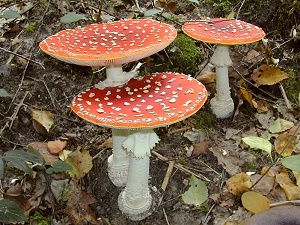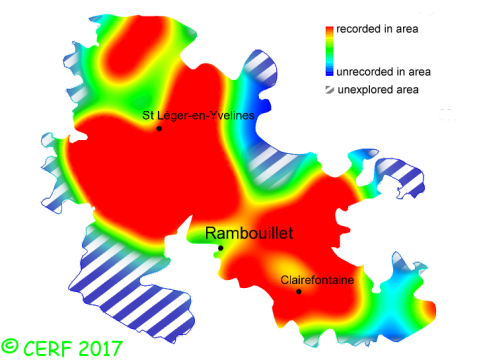| Amanita muscaria (L.:Fr.) Lamarck |
|
|
|
|
|
|
The cap is red, orange; its margin is striate. The cap surface is covered with white warty flakes, easily washed away by rain or age, not viscid nor sticky. The stem is fluffy white, bulbous, with warty rings, and a large membranous ring, not striate, with shaggy volval remnants on the edge. The flesh is unchanging; its taste is mild; the odour is not distinctive; its texture is fibrous. The gills are white, free, crowded . The spore print is white. This species is mycorrhizal. It grows on the ground, in parks, deciduous (sometimes coniferous) woods, on a rather acid soil, most of the time with birch and spruce, also with fir, larch, pine, oak, lime, rarely under beech. The fruiting period takes place from June to December.
Chemical tests : none. Distinctive features : Red to orange cap, covered with white pyramidal warts which can be washed off by rain; orange-yellow flesh under the cap cover, white everywhere else; white gills; white stem, with a non-striate membranous ring, and a bulbous base with bits of regularly arranged flaky volval remains Amanita muscaria is frequent and very widely present in the forest of Rambouillet, and is frequent, more generally speaking . | ||
|
page updated on 14/01/18

